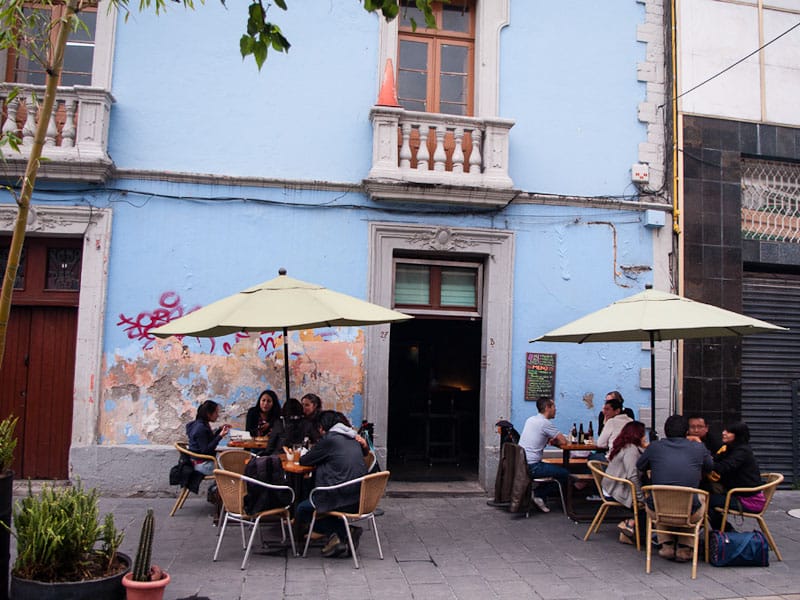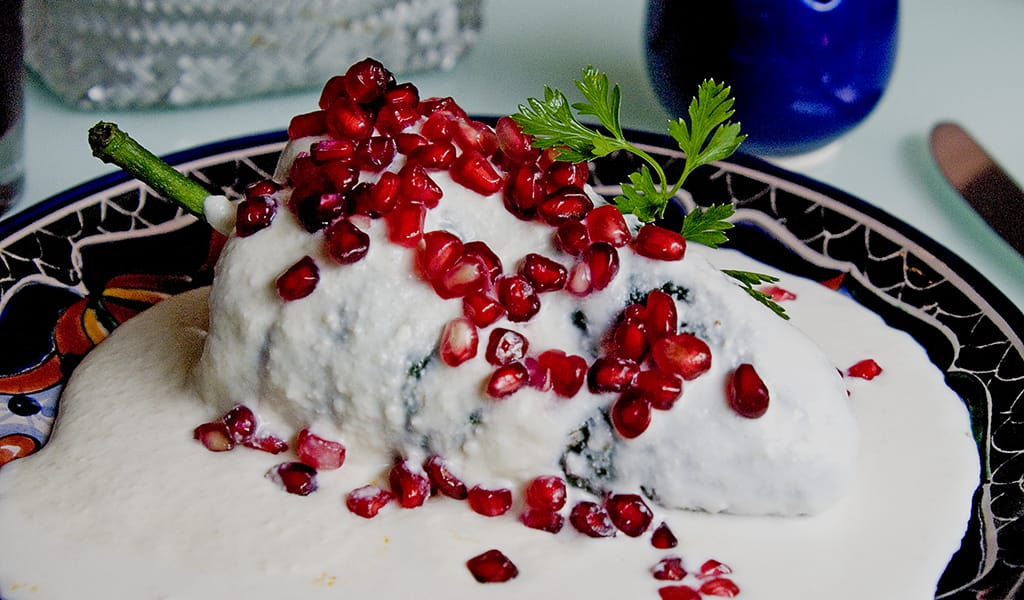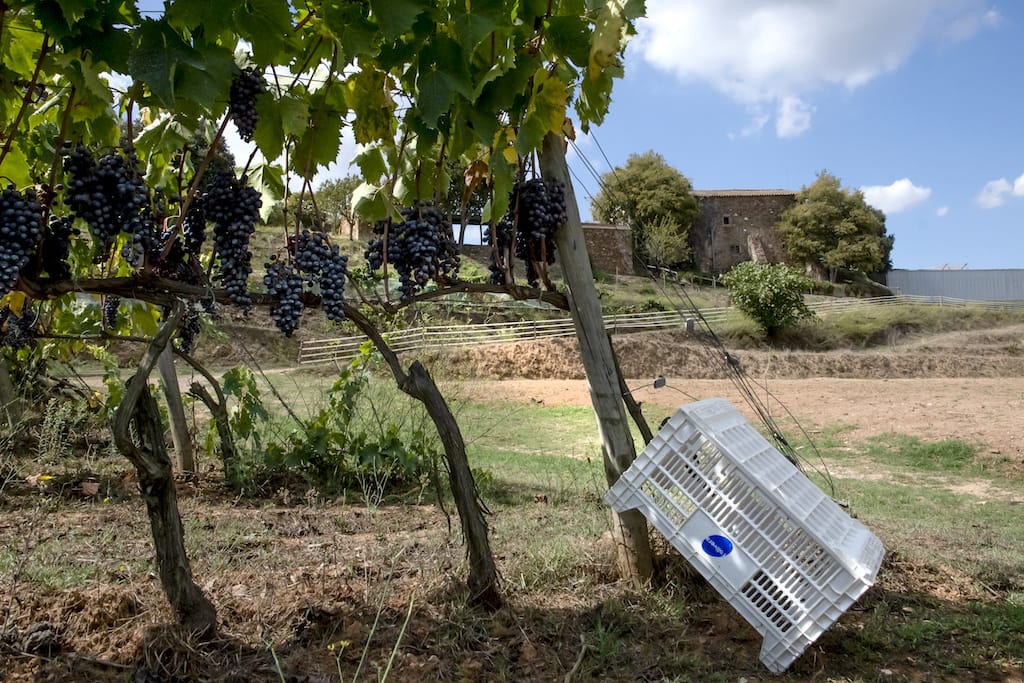Update: This spot is sadly no longer open.
Mexicans can mark their calendars by what they’re eating: moles for weddings, pan de muerto for Day of the Dead, lomo and codfish for Christmas and chiles en nogada for Independence Day.
Every September 15 and 16 Mexicans gather together to celebrate their independence from Spanish rule. This movement started in the city of Dolores Hidalgo, in the state of Guanajuato, the night of September 15, 1810, when Father Miguel Hidalgo y Costilla gave el grito de Dolores (“the Cry of Dolores”) that ignited the War of Independence. This war lasted until 1821, when Agustín de Iturbide, who later became the first Mexican Emperor, signed the Treaty of Córdoba that granted Mexico its independence.
On his way back to Mexico City, Iturbide stopped in the city of Puebla, where the townspeople held a feast to celebrate independence from Spain and Iturbide’s saint’s day, August 28. The story goes that the Augustinian nuns of the Santa Mónica convent were in charge of creating a special dish for the occasion. That was a time when most ingredients were local and seasonal by default, and so, using what they had on hand, the nuns came up with chiles en nogada: a stuffed poblano pepper bathed in a creamy walnut sauce and garnished with pomegranate seeds and fresh parsley. The name of the dish comes from nogal, Spanish for “walnut.” That the dish also happened to bear the green, white and red colors of the triumphant army must have pleased everyone involved to no end.

This dish pops up in menus all over Mexico City from late July to early October, when all the ingredients to make it are in season. And as with so many dishes that are popular and meaningful and have a great deal of sentimental value, there is, of course, a lot of controversy over the proper way to prepare it.
“Chiles en nogada are a dish that was created around 300 years ago, which puts the date 100 years earlier than popular belief,” says Eduardo Lucero, general manager of Corazón de Maguey, a mezcalería and restaurant in the bustling Coyoacán neighborhood. “This is a very complex dish that has changed a lot throughout the years. The nuns from Puebla only adapted a recipe they already had to make it more appropriate for the occasion.”
As with so many dishes that are popular and meaningful, there is a lot of controversy over the proper way to prepare chiles en nogada.
Corazón de Maguey serves two versions of this dish. One tries to stick as closely as possible to the original recipe, while the other gives chiles en nogada a modern spin. The old-fashioned chiles en nogada at Corazón de Maguey is stuffed with pulled pork and seasonal fruit, such as apples, plantains or pears. The chile is dipped in an egg batter and deep-fried. The sauce is a sweet combination of walnuts, goat cheese, a little bit of water and sugar. The modern version uses ground beef, and the chile is deep-fried without batter, then dipped in ice water to prevent it from getting soggy when it is peeled and to keep the stuffing from spilling out. Lucero omits the sugar in the sauce so that it veers more savory. We’re grateful that the restaurant offers both kinds, since we can’t choose a favorite between them.
And both versions are still different from the one we fell in love with last summer. Al Andar in downtown Mexico City is a small mezcalería run by Mariano Vera, who inherited his love for food from a long line of talented cocineras. Vera’s mother was the one responsible for the chile that had us smitten, and this year we decided we needed to go back to the restaurant and meet her.

“My grandmother and mother were from the state of Tlaxcala,” Martha Lima Suárez tells us. “They worked in kitchens all their lives in the neighboring state of Puebla, the cradle of chiles en nogada. So you can say that we have been preparing them for four generations now, including my son.”
Al Andar’s chiles are stuffed with the classic sweet combination of fruit and raisins, but the meat is a mixture of ground pork and beef cooked in a tomato sauce, and that unexpected addition of umami from the tomatoes deepens the flavors of the dish. The walnut sauce is both sweet and savory, with hints of sherry and cinnamon and other spices.
“We only use fresh ingredients for our chiles, so we’ll stop making them when they’re no longer available,” Suárez says. This level of attention and care is the reason why people keep returning, even when Al Andar is no longer serving chiles en nogada. During the week, Vera runs the kitchen, but he cedes it to his mother when the weekend begins. To accompany the fine work of the kitchen, Al Andar offers a wide selection of mezcals, but for something a little less potente, there’s also a number of artisanal beers to choose from.
A proud people, Mexicans join the Grito every year to celebrate their roots and their independence – and of course, to eat the food, which, along with chiles en nogada, includes traditional dishes such as pozole, flautas and pambazos. And after September 16, we can start looking forward to the Day of the Dead.
¡Vivan los chiles en nogada! ¡Vivan las cocineras mexicanas! ¡Viva México!
Azul Histórico, Azul Condesa, Restaurante Nicos and El Bajio are a few other recommended spots to try chiles en nogada.
Editor’s note: As Independence Day in Mexico approaches, we though it would worthwhile to rerun this feature, which was originally published on September 13, 2013.
 October 15, 2021 Can Calopa – L’Olivera
October 15, 2021 Can Calopa – L’Olivera
This may come as a surprise, even to locals, but Barcelona has its own “urban” vineyards […] Posted in Barcelona August 12, 2013 Horchatería Sirvent
August 12, 2013 Horchatería Sirvent
Be it kvass in Russia or boza in Turkey, every nation seems to have one of their own, a […] Posted in Barcelona April 3, 2020 Coronavirus Diary
April 3, 2020 Coronavirus Diary
Editor’s note: We don’t operate in Milan, but it’s the home of our managing editor, Emma […] Posted in Naples
Published on September 12, 2017
Related stories
October 15, 2021
BarcelonaThis may come as a surprise, even to locals, but Barcelona has its own “urban” vineyards and winery. Located inside an old masía (farmhouse) in Collserola Natural Park, a vast greenspace on the edge of Barcelona’s northwestern city limits, the winery – originally a project established by the Barcelona City Council – uses grenache and…
August 12, 2013
Barcelona | By Hollis Duncan
BarcelonaBe it kvass in Russia or boza in Turkey, every nation seems to have one of their own, a locally loved drink that to most outsiders comes off as a particularly strange brew. In Spain, that drink is horchata, a unique and deliciously refreshing concoction made from chufas (tigernuts), water and sugar. Served chilled, horchata…
April 3, 2020
NaplesEditor’s note: We don’t operate in Milan, but it’s the home of our managing editor, Emma Harper. So we asked her to share her experience living under lockdown in the epicenter of Italy’s outbreak. The first thing I noticed on lockdown in Milan, and the thing that has stuck with me the most, is the…


















































































